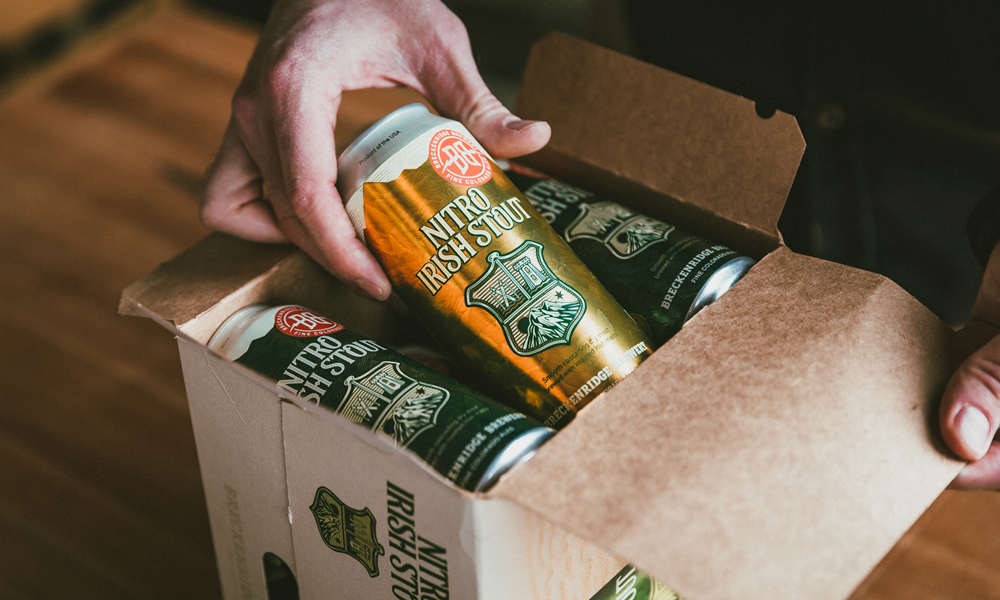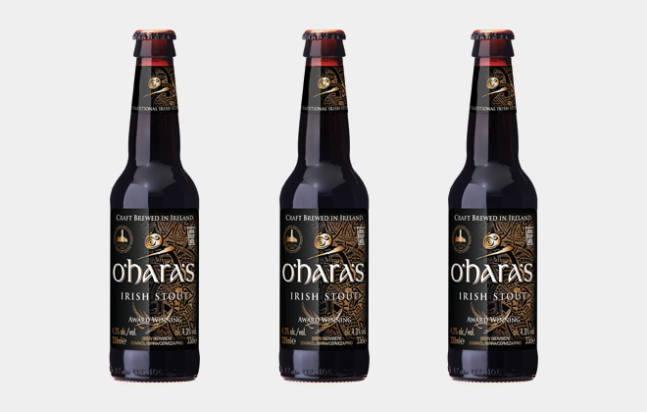Guinness’s centuries-long dominance of Irish stouts is no accident. It’s the result of highly persuasive marketing, a romanticized drinking culture, extensive product refinement, and longstanding tradition. It’s also a really good beer and Arthur Guinness knows I’ve spent more than my share of nights in a pub exclusively drinking his pints. But as I’ve gotten more into the craft beer scene in general, I’ve started looking for alternatives. Plenty of them exist, both here and in Ireland, and, to commit some mild blasphemy, more than a few of them are better than Guinness.
What Makes an Irish Stout?
Let’s banish any thought that there’s some secret, unique ingredient that makes Irish stouts Irish. They’re not malting a special grain or adding a bit of seawater to every batch. You don’t have to wear a big sweater when you make it and a banshee doesn’t keen over the finished kegs.
When we’re talking about Irish stouts, we’re talking about a brewing tradition that’s produced a distinct style, like kolsches, IPAs, pilsners, altbiers, and whatever Americans have decided to do to each of them when the styles cross the ocean. To follow the Irish style, the beer should be low ABV, generally between four and five percent, and should heavily feature malt and roasted flavors. Hops aren’t as prominent and only really provide a bit of bitterness to cut what could otherwise be overwhelming malty or caramel sweetness. For the color, you’re should mostly find a deep, deep red. If it’s black and opaque, you’re likely looking at an imperial stout in the American or Russian tradition. The invention of nitro systems in the late 50s added the creamy white head to everyone’s pints. That’s not necessarily a requirement but it’s a hell of an improvement.
Also, it’s an ale fermented using ale yeast strains at temperatures above 55 degrees Fahrenheit. All stouts are ales. If someone tries to argue that with you, they don’t actually know beer and you should disregard everything they say, whether it’s presented as fact or opinion. The fact that they’re labeled separately on some old pubs (eg. “Serving Fine Stouts and Ales”) is a result of old marketing distinctions, not of production methods.
For anyone now wondering about the difference between stouts and porters, it’s a long and complicated story that ends with the terms basically being interchangeable. I await the emails of recently angered beer nerds.
Dry Stout vs. Extra Stout
Put simply, dry stouts are low ABV stouts, where flavors come from whatever’s in the malt, roasted barley, and hops that isn’t a fermentable sugar. For a traditional Irish stout, it’s the default setting. If you’re buying a nitro pour stout off a barman in Ireland, it’s a dry stout almost without exception. It’s such a strong default setting that it’s rarely listed on the packaging of Irish stouts and seems a bit pointless and superfluous to put the “dry” qualifier on it at all. I actually had to do a double take the first time I saw Guinness listed as a dry Irish stout at a bar here in the US.
Extra stouts are generally stronger in every way. The ABV is higher, there’s more sweetness coming from residual sugars, a higher ratio of roasted malt in the grist bill, and there’s a distinct hoppy bitterness that approaches what you’d find in some weaker IPAs. It comes from the beer’s original market. Both alcohol and hops act as preservatives and higher concentrations of both meant the beer could travel farther. A normal extra stout meant bottles and casks of Guinness would survive distribution throughout Ireland and Britain, while the extra stout’s bigger brother, the foreign extra stout, could be sent to British export markets throughout the empire. It’s part of why Guinness has such a following in Africa and the Caribbean.
The best thing you could do to understand the difference is drink both at the same time. The best example I’ve ever found personally of the difference isn’t even in Guinness. It’s in O’Hara’s draught and Leann Folláin. Double fisting with each of those is a recipe for an education in more ways than one.
What Stouts Do They Drink in Ireland?
The big three in Ireland are Guinness, Murphy’s, and Beamish & Crawford, with fierce loyalties attached to each, though transparency necessitates I point out none of them are independently Irish companies anymore. Guinness is in the Diageo portfolio and Murphy’s and Beamish in Heineken’s. Still, you can’t really fault the Irish for sticking with their big brands, since most of us in the US are still drinking Molson Coors or AB InBev products.
Guinness drinkers are obviously the most common, since Guinness is found in just about every pub in Ireland, it’s a high quality, cheap, domestic brew, and tourists are obsessed with getting Guinness right from the source. The Murphy’s and Beamish crowd, once international challengers to Guinness’s dominance, has been shrinking, thanks to some strategic and not strictly legal corporate maneuvering by Guinness. There are still Murphy’s and Beamish holdouts though and you’ll find most of them in Cork, since that’s the traditional home of both stouts.
Craft producers are slowly chipping away at Diageo and Heineken’s duopoly though, with quite a few you can’t get in the US. Kinnegar Brewing in Donegal, where I spent the last few months of 2022, carries Yannaroddy year round and the Winterland 2023 release is an imperial stout. Porterhouse Brew Co. has a surprisingly good nitro stout that’s been gaining traction. I say surprisingly because Porterhouse reminds me a lot of Iron Hill here in America, a company that has made me cynical about rapidly expanding brewpub chains. White Hag out of Sligo is sucking on the IPA kool-aid but puts out enough stouts to stop most of my complaining. Fransican Well makes an absolutely fantastic stout as part of their core line, but they were also snapped up by Heineken a few years ago, so I usually drown my confliction in two more pints and some of their garlic bread.
There are dozens more smaller producers all over the island, like Wicklow Brewing, Black’s of Kinsale, Killarney Brewing Company, Eight Degrees Brewing Company, and Bullhouse Brew Co. to name a few. They’re all up against the same challenge, namely unseating Guinness as the default stout offered. In my experience, they’re all at least up to it.
The Best Irish Stouts
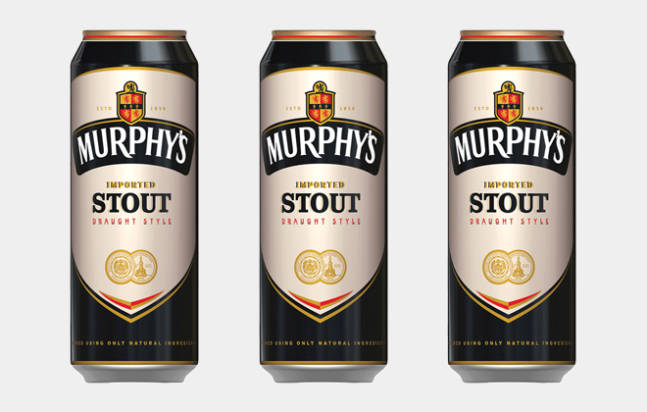
Murphy’s Irish Stout
I genuinely enjoy Murphy’s more than Guinness and I’m not just saying that to suck up to my friends from Cork. It’s not like there are massive, style-divergent differences between the two. It’s more nuanced, like trying to tell the difference between tap water in different cities. Which I don’t mean as a comment on the quality of the beer, more a comment on how different regions of Ireland drink both like tap water. I find Murphy’s is a bit darker, heavier, and roastier than Guinness, all of which make it exceptionally well suited to day-drinking during chilly early spring days. Murphy’s is a little tougher to find than Guinness, but it’s in most grocery stores and liquor stores. You’ll find a good nitro four pack if you put a little effort in.Beamish has been around almost as long as Guinness and, if possible, has an even more devoted following. That could partially be due to its more limited distribution in Ireland. Or it’s due to the innate Corkonian lust for independence. Like Murphy’s, it’s not massively different and it’s the nuances that make it a satisfying divergence. Here, it’s in the roast and bitterness, both of which have been dialed up in Beamish. I speculate it’s due to a slightly larger proportion of roasted barley.
Beamish’s website says they don’t officially export, but I know I’ve seen cans floating around here in the US. I have a feeling they’re getting here in less-than-legal ways. More like two Irish longshoreman making deals with various bodegas and grocery stores.
O’Hara’s Irish Stout
O’Hara’s was among the first names we heard coming out of the Irish craft beer renaissance, which put them in a tough position as they tried to break into the American market. They had the monumental task of taking a chunk out of Guinness’s dominance. It seems to have worked though. Their stout can be found in the odd liquor store around the US.
Their stout is different from Murphy’s, Beamish, and Guinness in more profound ways than the other three are different from each other. It’s just as drinkable as the others, but it’s like they found a way to combine the highlights of the big three into one beer. There’s a great roasted barley backbone, a finely balanced dry bitterness, and an exceptional smoothness. Last time we were in Dublin and found it on tap, we happily stuck with it through the night.
Learn More
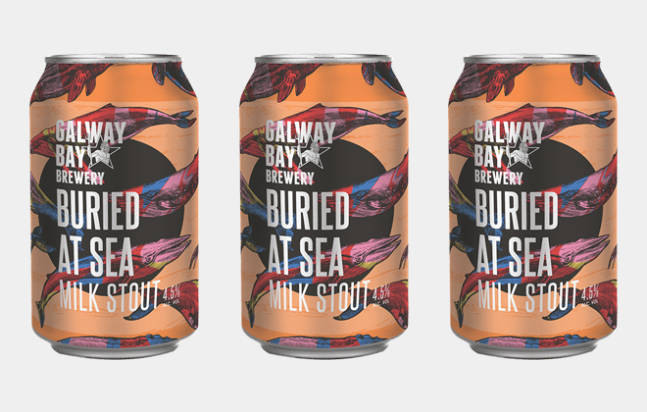
Galway Bay Brewery | Buried at Sea
Galway Bay Brewery’s Buried at Sea Milk Stout bucks a few of the more typical characteristics of Irish stout in a couple ways, the main one being the addition of lactose and chocolate to the beer. It puts the beer a little closer to American offerings than traditional Irish. In fact, a good way to think about Buried at Sea might be as a middle point between an American milk stout and a traditional Irish stout. To be clear, that doesn’t mean it gets on top of you the way some American stouts can. Buried at Sea is just as sessionable as any of the other stouts we’re featuring here, with nicely developed flavors that invite a second and third (and so on) pint. Right now, it’s found primarily in Ireland and even then, mostly in the pubs that Galway Bay Brewery operates. So take this less as a recommendation for St. Patrick’s Day and more as the start of a pub crawl.
Learn More
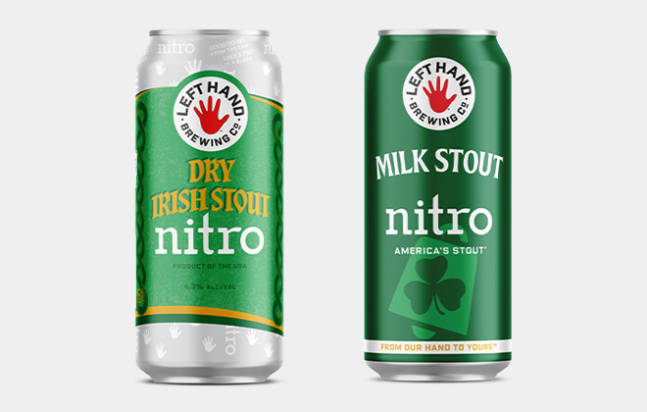
Left Hand Brewing | Dry Irish Stout & Milk Stout
I’m featuring two choices from Left Hand Brewing for two reasons. The first is we’ve never had a bad beer from Left Hand. The second is their Dry Irish Stout, which would be our main recommendation, is only available in mixed packs, which means it likely won’t be as accessible as their Milk Stout, which is the second recommendation. Both are exactly what you want from a nitro stout with the obvious differences inherent in their styles. The dry Irish stout is a creamy, approachable stout with a substantial body. The milk stout is a rich, sweet stout that drinks like a roasted milkshake, with the key difference of not sitting like lead in your stomach. Either one is a solid bet.
Dry Irish Stout:Learn More
Milk Stout:Learn More

Breckenridge Brewery | Nitro Irish Stout
The Nitro Irish Stout from Breckenridge is a surprisingly light offering for a stout coming from an American brewery. Normally we’d expect to find some hoppy kick or deep toastiness, something to insist that this was a stout from America. But there isn’t. It’s a mild, unassuming, drinkable, enjoyable, smooth, creamy, light bodied beer, with a perfectly reasonable 4.8% ABV. Honestly, if someone put this in front of me for a blind taste test, I’d have a hard time separating it from its Irish inspiration.
Learn More
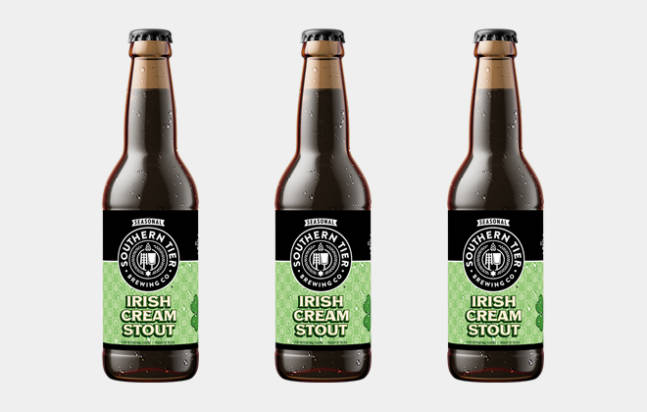
Southern Tier Brewing Company | Irish Cream Stout
A quick point of clarification. When you’re reading this beer name, read it as Irish-Cream Stout, not Irish Cream-Stout. I say this because we were confused the first time we had it and were thinking about it more as the cream ale version of a stout than a stout with a taste and texture closer to Bailey’s. With that new frame of reference, the beer certainly lives up to its name. There’s a good heartiness to it thanks to the roasted malt and lactose and the hops are deftly handled. It’s on the heavier side at 5.8 percent, so have some caution if it’s going to be your afternoon’s main beer.
Learn More
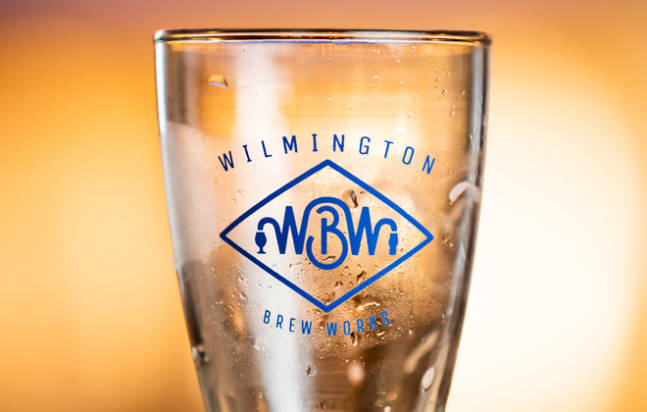
Wilmington Brew Works | Bricfeasta Indiscretion
I’m being a little elitist and self-serving here, because Wilmington Brew Works is my favorite brewery in my hometown, but I’ll hide this conflict of interest beneath the flimsy cover of my opinion as a beer snob rather than part time employee. It has the exact flavor profile you’d want in an Irish stout, with a smooth, roasted malt profile and light bitterness. The addition of oats to the mash also bodies it up, but not to the point of heaviness. It’s just satisfying. The only complaint I have about it is that it’s not on a nitro tap, which should be considered a massive hint to anyone from Brew Works currently reading this.

